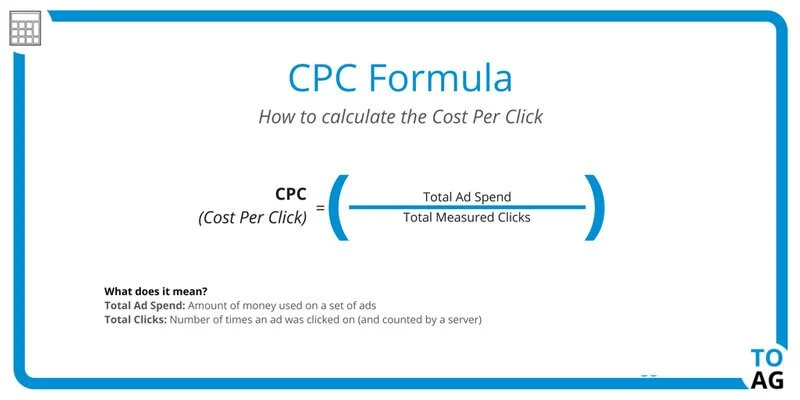Cost per click Calculator
Invest Your Money In An Ad Campaign By Consulting A CPC Calculator!
- 1
Helps Create Better Campaigns
With a CPC calculator, you can find out the scope of your campaign so that you can set your goals. To maximize the interactions through your campaign, you must add deets like additional links or contact information.
- 2
Set A Work Scope Within Your Budget
With a CPC calculator, you can understand what the goals you can achieve within your budget are. It helps you see the potential of your business and whether it needs to maximize the budget or not.
- 3
You’ll Know Different Scenarios
A CPC calculator helps you give every different scenario for your business. Your investment affects the variety of outcomes you can receive in return. The CPC tools help you see the impacts of your campaign by investing different amounts of money.
What Is CPC?
The cost-per-click, or CPC, is the amount you will pay for each click in a PPC, or pay-per-click, advertising campaign.
You’ll be able to keep your brand marketing budget on track if you monitor your CPC because it tells you how much you’ll pay (on average) every time someone clicks on your ad.
You’ll be able to plan out how many ads you can run and at what cost per click to stay within your budget.
The CPC formula in digital marketing is as follows:
Cost Per Click = (Cost To Advertiser) / (Number Of Clicks)

What Is A CPC Calculator?
Instead of doing the math on paper, a CPC bid calculator can provide you with instant results about the CPC of your PPC campaign.
When it comes to your campaign, a cost-per-click calculator saves you time and effort, which you can put toward another high-priority area of your strategy.
There are numerous online CPC calculators available, with varying degrees of quality.
What Factors Affect Your CPC?
There are a few!
-
-
-
-
- Maximum Bid
The maximum bid is the amount you’re willing to pay each time a potential lead clicks on your ad. If you want to steal ad space from an advertiser with a higher Ad Rank or Quality Score, you must place a realistic maximum bid. - Quality Score
Google calculates your Quality Score on a scale of 1 to 10. Your Quality Score is determined by factors such as click-through rate (CTR), past campaign performance, and others. If you have a high-quality score, you can pay less for a top ad position. - Ad Rank
Google calculates Ad Rank and uses it to determine where your ad will appear in search engine results, if it appears at all. This metric is calculated by Google using your bid amount, ad quality at auction, Ad Rank thresholds, the context of a search query, and the expected impact of ad extensions.
- Maximum Bid
How Can You Lower Your CPC?
There are several ways to reduce your CPC, but we’ll focus on two of the most effective.
- Don’t forget about long-tail keywords.
Long-tail keywords are underutilized, primarily because business owners do not believe anyone will search for them. Long-tail keywords have more phrases and are far more detailed than short-tail keywords.
Long-tail keywords are less expensive to target because fewer people search for them. However, most business owners are unaware that while these keywords receive fewer searches, the searches they do receive are from qualified leads.
Long-tail keywords are an excellent strategy for lowering your CPC because you will spend less per click while still receiving a positive ROI. - Lower Your Bids
The second method for lowering your cost-per-click calculator amount is to lower your bids. This approach may appear obvious, but some business owners are unaware that they are bidding too high for their proposed keyword.
Conduct keyword research, such as using Google’s Keyword Planner, to determine the average CPC for your targeted keywords and then determine how much you’re willing to pay for an ad click. You should always ensure that your bid is sufficient to provide a positive ROI.
-
-
-
